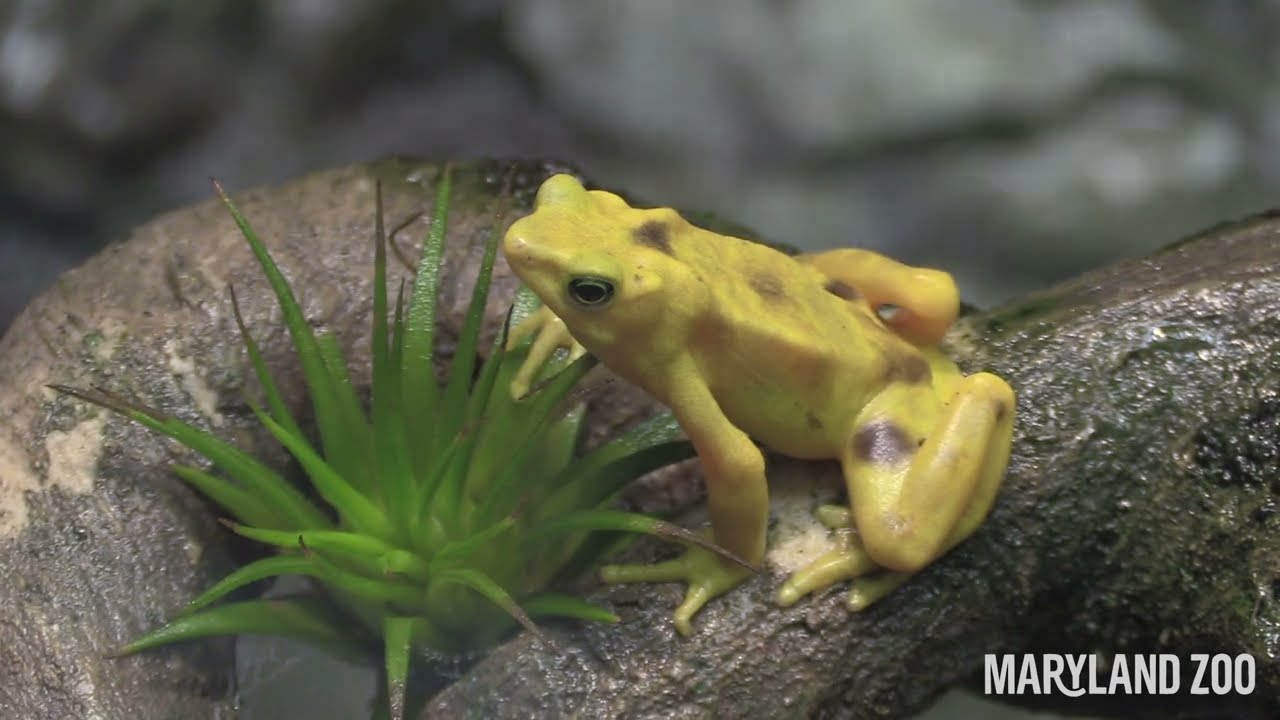- The historical significance and biology of the Panamanian Golden Frog, its habitat, and the factors threatening its survival.
- Conservation efforts for the Panamanian Golden Frog in Panama, including programs, collaborations, and local community engagement.
- The role of zoos and wildlife organizations in the ex-situ conservation and captive breeding of the Panamanian Golden Frog.
- The importance of public education and raising awareness to support the conservation of the Panamanian Golden Frog.
- Challenges and successes in the efforts to preserve the Panamanian Golden Frog population.
The Panamanian Golden Frog stands as a vibrant symbol of Panama’s rich natural heritage, its striking yellow hue marking it as one of the most visually distinctive amphibians. Endemic to the forests of the Central American country, this amphibian is scientifically classified within the genus Atelopus and primarily inhabits high-altitude cloud forests. The species has fascinated researchers and conservationists due to its unique ecology and vibrant appearance. Unfortunately, it faces numerous threats leading to its classification as critically endangered on the IUCN Red List. This amphibian has an average adult size of about 45 to 63 millimeters, distinguishing itself with a colorful variation of bright yellow and black marbling, warning predators of its toxicity.
The threats challenging the Panamanian Golden Frog’s survival are multifaceted. A severe fungal infection caused by Batrachochytrium dendrobatidis, commonly known as chytrid fungus, has decimated frog populations worldwide, including this rare species. In addition to disease, habitat destruction due to agricultural expansion, logging, and urban development further exacerbates their plight. The culmination of these pressures has driven remarkable international collaboration efforts in wildlife conservation, especially within Panama, where these frogs are most at risk.
Conservation efforts in Panama have taken a comprehensive approach. The establishment of reserves and national parks serves as a critical sanctuary for their habitat, although efforts extend well beyond mere land protection. Collaborative programs like the Panama Amphibian Rescue and Conservation Project bring together scientists, local communities, and international organizations. This multilateral approach emphasizes the captive breeding of Panamanian Golden Frogs to build a stable population that could potentially be reintroduced into the wild. Such initiatives highlight the paramount significance of genetic diversity, health assessments, and the management of ex-situ populations in captive environments to bolster the chances of species survival.
Zoos and wildlife organizations have been instrumental in these conservation endeavors. Through the ex-situ conservation strategy, zoos worldwide have created ark populations that aim to safeguard the genetic diversity of the Panamanian Golden Frog. The Smithsonian Tropical Research Institute and the El Valle Amphibian Conservation Center are prominent institutions actively breeding these frogs in captivity. By recreating their natural conditions and carefully monitoring their health, these organizations not only maintain the species’ survival outside its native habitat but also facilitate invaluable research. Studies conducted in these facilities contribute to understanding the Panamanian Golden Frog’s unique biological adaptations, reproductive behaviors, and disease resistance strategies.
Public education forms the cornerstone of fostering a supportive environment for conservation, drawing on local and global audiences to rally behind the Panamanian Golden Frog. Schools, community groups, and media campaigns play a crucial role in raising awareness. They educate the public about the ecological value of amphibians and the specific challenges faced by this charismatic species. Through storytelling, exhibits, and interactive workshops, these educational efforts make a compelling case for conservation action, illustrating the impact individual and collective actions can have on safeguarding biodiversity.
Engaging local communities in conservation efforts establishes a sustainable model for change, breaking down barriers between scientific advocacy and public understanding. Programs that involve citizen scientists in habitat monitoring and data collection help bridge gaps, nurturing a culture of stewardship. Empowering local youth with educational resources fosters a generational shift in conservation perspectives, ensuring that awareness and action extend beyond institutional mandates.
The conservation journey of the Panamanian Golden Frog is fraught with challenges. Despite significant successes in captive breeding and raising public awareness, the reintroduction of captive-bred frogs into the wild remains a contentious topic. The presence of chytrid fungus and continued habitat degradation present severe obstacles to meaningful recovery in natural habitats. Efforts to control the spread of this deadly fungus rely on scientific research to develop effective treatments and management protocols. Conservationists strive to adapt and innovate, striving to create conditions where reintroduction is feasible and sustainable.
Notably, the conservation crusade has witnessed several triumphs. Platforms like World Frog Day and National Amphibian Conservation summits have propelled global conversations around amphibian preservation. These ventures have led to increased funding, public interest, and policy advocacy, creating a more robust framework for safeguarding other threatened species worldwide.
In conclusion, the Panamanian Golden Frog’s fate is intricately linked with the broader narrative of biodiversity conservation. By exploring collaborative ventures, rigorous research, community engagement, and education, conservationists aim to ensure this species can thrive once again in the wild. Through integrated and persistent efforts, the legacy of the Panamanian Golden Frog may inspire future generations to develop their own conservation ethos, one rooted in empathy, science, and an unyielding commitment to the world’s natural wonders.
*****
Source Description
Dr. Ellen Bronson of the Maryland Zoo speaks on her week at El Valle Amphibian Conservation Center (EVACC) in Panama, and the importance of their work.


